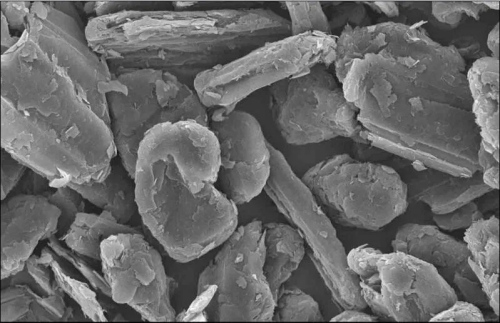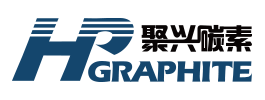【Needle Coke】

【Needle Coke】
Needle coke is a high-quality product vigorously developed in the field of carbon materials. It appears as a silver-gray, metallic-luster porous solid with a distinct flow texture, large and sparse elliptical pores, and particles with a high aspect ratio, showing fibrous or needle-like texture. It feels lubricative to the touch and serves as the raw material for producing ultra-high power electrodes, special carbon materials, carbon fiber, and their composites. Based on the feedstock used, needle coke is categorized into petroleum-based and coal-based types. Needle coke produced from petroleum residue oil is called petroleum-based needle coke, while that produced from coal tar pitch and its fractions is referred to as coal-based needle coke.

Basic Information
Chinese Name: 针状焦
English Name: Needle Coke
Type: Material
Feedstock: Petroleum residue oil
Feature: Distinct flow texture in its structure
Production Process: Vacuum distillation
Application:
Needle coke is a premium material for producing high power and ultra-high power graphite electrodes. Electrodes made from needle coke exhibit excellent thermal shock resistance, high mechanical strength, good oxidation resistance, low consumption, and high permissible current density. Depending on the feedstock used, it is classified into petroleum-based and coal-based types. The United States leads in petroleum-based needle coke, while Japan dominates in coal-based needle coke. Production facilities by Japan's Mitsubishi Chemical and Nippon Steel Chemical were commissioned in the late 1970s and early 1980s. In contrast, the U.S.-based Great Lakes Carbon Company first developed needle coke successfully in the 1950s. In 1964, Union Carbide Corporation in the U.S. successfully used needle coke to manufacture ultra-high power electrodes. According to the latest statistics, domestic demand for high power and ultra-high power electrodes is 60,000–100,000 tons per year, requiring 60,000–120,000 tons per year of needle coke. However, with limited imports and only 30,000 tons/year capacity at Jinzhou Petrochemical Company, domestic production of ultra-high power electrodes is constrained by the available needle coke supply.
Production Processes
The main production technologies for coal-based needle coke include the following four methods:
1) Vacuum Distillation Method
In 1971, LCI of the U.S. first proposed using vacuum separation to extract needle coke from coal tar pitch and filed a U.S. patent. The core technology involves cutting suitable feedstock via vacuum distillation. The process is simple but results in low needle coke yield.
2) Solvent Extraction Method
In 1981, LCI applied for a U.S. patent for a solvent-based method to remove quinoline insolubles (QI) from pitch. A coagulant liquid is first used to agglomerate the QI, which is then separated in a gravity settler. This technique resembles the industrial device developed by Nippon Steel Chemical. The solvent-treated needle coke has high yield and quality but involves a more complex process and higher investment.
3) ML Process
In 1985, LCI and Japan's Maruzen Petrochemical patented the M-L process in the U.S., combining special raw material pretreatment with a two-stage delayed coking system. This was the first needle coke production device using coal tar pitch. The quality of the needle coke produced is the best among methods, but the process is complex, the yield is low, and the investment is high.
4) Flash Evaporation Polycondensation Method
In 1985, Anshan Refractory Institute, Anshan University of Science and Technology, and Shijiazhuang Coking Plant jointly developed the flash evaporation-polycondensation method and applied for a Chinese patent. In this method, mixed feedstock oil is fed into a specific flash tower where, under certain temperature and vacuum conditions, flash oil is evaporated. The flash oil then enters a polycondensation kettle for polymerization to obtain polycondensed pitch. This process has moderate yield and is relatively simple. Although Anshan Coastal Fertilizer Plant conducted industrial testing, the process lacked refinement and was eventually halted.
In China, coal-based needle coke is typically benchmarked against standards from Japan's Nippon Steel Chemical: true specific gravity ≥2.13, ash content ≤0.1%, volatile matter ≤0.5%, sulfur ≤0.5%, coefficient of thermal expansion (CTE) 1×10⁻⁶/°C, and moisture ≤0.2%.
Baosteel Chemical Company is currently conducting pilot tests, and the quality of its needle coke has reached that of Japan’s Nippon Steel Chemical and Mitsubishi. Anshan Institute of Thermal Energy Research has also made significant progress in pilot testing. Sanyuan Carbon Co., Ltd. in Shuozhou, Shanxi, has passed the small-scale test evaluation by the Shanxi Provincial Science and Technology Department. Shanxi Hongte Coal Chemical Co., Ltd. has entered industrial trial production. Though the CTE is not fully up to standard, nearly 3,000 tons of product have been supplied to Lanzhou Carbon Plant and Nantong Carbon Plant for the production of 400-series high-power electrodes.
Needle coke, developed vigorously in the 1970s as a premium carbon material and a form of synthetic graphite, features low thermal expansion coefficient, low porosity, low sulfur, low ash, low metal content, high electrical conductivity, and excellent graphitization. Products made from it are chemically stable, corrosion-resistant, thermally conductive, and mechanically strong at both low and high temperatures. It is mainly used to produce high power (HP) and ultra-high power (UHP) graphite electrodes for electric arc furnace (EAF) steelmaking, as well as for special carbon products. It is also a new material used in brushes, batteries, carburants for steelmaking, and high-temperature premium refractory materials. The metallurgy industry is the largest consumer of graphite electrodes, while phosphorus production and other sectors also use them. Using high or ultra-high power EAFs can shorten smelting time by 30–50% and save over 10–20% in electricity, offering significant economic benefits.
Depending on the raw material route, needle coke is divided into petroleum-based and coal-based types, with some differences in production methods. Petroleum-based needle coke production was developed in the U.S. in the late 1950s. It uses heavy distillates such as thermal cracking residue oil and clarified oil from catalytic cracking in refineries. The process involves delayed coking and calcination to produce the final product. ConocoPhillips is the world's largest producer of petroleum-based needle coke, with a production capacity of 370,000 tons/year as of 2012. The coal-based needle coke process was developed in 1979 by Japan's Nippon Steel and Mitsubishi Chemical, using coal tar pitch, a by-product of coal coking, as raw material. The production involves raw material pretreatment, delayed coking, and calcination.
C-Chem, a professional carbon product subsidiary of Nippon Steel Group, is the world's largest coal-based needle coke producer. The primary process difference between coal-based and petroleum-based needle coke lies in raw material pretreatment. Coal tar pitch is mainly composed of aromatics but contains quinoline insolubles (QI), which are amorphous carbons formed by polymerization of resinous substances during pitch distillation, as well as coal and coke dust carried by coke oven gas. These substances adhere to the intermediate phase, hindering the growth and fusion of spherules, thereby preventing the formation of well-developed needle-like texture during coking. Thus, coal pitch must undergo pretreatment—first removing QI that blocks the growth of spherules, then adjusting the composition to obtain suitable feedstock for needle coke production. Main pretreatment methods include distillation, centrifugation, solvent extraction, and modification. Among these, solvent extraction and modification have been successfully industrialized in China, with stable operation and high-quality needle coke output.
Needle coke is a scarce product both domestically and internationally. Beyond electrodes, it also finds applications in lithium-ion batteries, electrochemical capacitors, and nuclear graphite. Internationally, needle coke prices have been rising. Due to limited domestic producers and undersupply, countries like the U.S., Japan, and Germany, which strictly limit the development of carbon products due to their high energy consumption and pollution, have seen declining needle coke production year by year. This presents new opportunities for the development and technical breakthroughs of coal-based needle coke in China.
Feel free to contact us anytime for more information about the needle coke market. Our team is dedicated to providing you with in-depth insights and customized assistance based on your needs. Whether you have questions about product specifications, market trends, or pricing, we are here to help.
No related results found








0 Replies